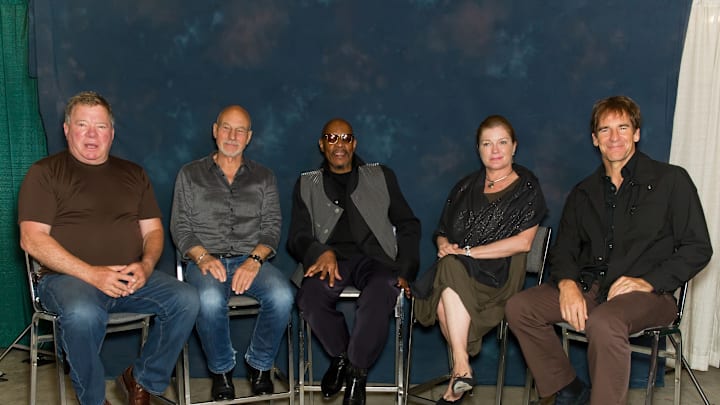Star Trek is all about Infinite Diversity in Infinite Combinations, but most fans will argue that the best of all the series is The Next Generation. Many of them will die on that hill. I am here to make the case for Deep Space Nine. To me, it is the darkest, most-risk-taking, most thought-provoking show.
Allow me to state my case.
The Next Generation launched with a killer pilot, but seasons one and two more or less lurched along, with slow, talky episodes and not much character development. Sure, there were standout episodes but early on, there were too few to support the premise that TNG was great from the start. I found the sets gorgeous and sleek, but also sterile and too brightly lit.
The show found its footing in season three and gave us several terrific episodes each season, none more than in season six, when we got the “Chain of Command” two-parter, “Tapestry,” “Relics,” “Starship Mine,” “Frame of Mind,” “A Fistful of Datas,” and “Descent, Part I,” and more. Yes, there are “Rascals” adherents out there, too. The series was all wrapped up by a good but not great seventh and final season. That is, until the movies and then season three of Picard came along. Prior to that, season seven's “All Good Things…” made for a memorable farewell, giving us time travel, Q, an old Picard, etc.
Meanwhile, Deep Space Nine set up its seven-year run with “Emissary,” which is also a killer pilot. Much like TNG, DS9 took a bit of time to find its groove in terms of episode quality, but it did so in season two. It quickly gave its cast more to do, with better opportunities to blend as an ensemble. From the get-go, DS9 just felt edgier than its predecessor, despite such utter clunkers as season one’s “Move Along Home” and “If Wishes Were Horses” and season two’s “Rivals” and “Profit and Loss.”
Even if you hated an episode’s plot, the performances popped, the jagged permanent sets, often shot in shadows, kept things visually interesting, and the stark music heightened everything aurally. For an episode that puts all the elements together perfectly, look no further than “Duet.” That season one offering is a personal favorite of mine, pailing only to season six's “Far Beyond the Stars".
DS9 also made time for an expansive roster of recurring characters. Season one introduced Louise Fletcher as Winn Adami, Aron Eisenberg as Nog, Andrew Robinson as Garak, Camille Saviola as Kai Opaka, and Marc Alaimo as Dukat. These characters were woven into the fabric of the show, and all but Opaka figured into the events of the series finale.
Not to get too far ahead of ourselves, but the series finale, “What You Leave Behind,” in my book, ties with “All Good Things…” and the Picard-ending “The Last Generation” for best Star Trek series finale. It tied up story threads, paid off relationships, put characters on their next paths, left some elements to the viewer’s imagination, and elicited a few laughs and a lot of tears.
Meanwhile, between season three and season seven, DS9 turned out far stronger episodes than duds. I loved the father-son dynamic between Sisko and Jake, the romance between Odo and Kira, not to mention the friendship between Kira and Dax. The arrivals of Worf and the Defiant provided the show with fresh aspects to explore.
Not to forget the ongoing Dominion War arc, which kicked off with the fifth-season finale, “Call to Arms,” took Star Trek in a controversial direction. Many fans and even Star Trek creator Gene Roddenberry’s wife, Majel Barrett-Roddenberry, questioned whether Roddenberry would have approved. And it’s the same with DS9’s tentative explorations of religion, same-sex relationships, and more.
Still, my feeling is that DS9 “went there” more often and more committedly than TNG, and that resonated with me. Did it always work? No. Bigger swings occasionally meant bigger whiffs. “Profit and Lace,” with Quark transformed into a Ferengi female, deserves its reputation as one of DS9’s -- and Star Trek’s -- worst-ever installments. Would it have been much, much more of a problem were the show on now, when a streaming series typically runs a mere eight or ten episodes? You bet.
It all boils down to this: I’d happily rewatch all of both TNG and DS9, but I’d go with DS9 first.
